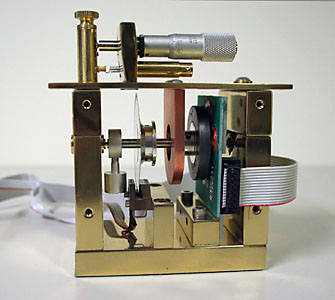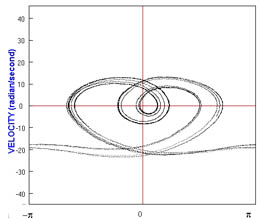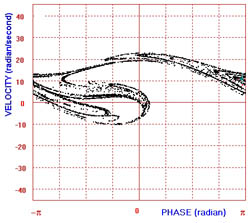
| Oscillations and Waves
> Oscillations > Nonlinear
Systems |
DCS# 3A95.50c |

| Daedalon chaotic pendulum | 202-13-E3 |
| driver | 202-13-E3 |
| interface |
202-13-E3 |
| laptop | 206 |




The wide ribbon cable sends the drive signal from the driver control box to the pendulum. The narrow ribbon cable transmits the optical encoder data from the pendulum to the computer interface. A BNC cable from the "output sync" jacks of the driver to the interface sends a timing pulse at the beginning of each cycle for the Poincare section. A USB cable connects the interface to a computer. Currently only the Gateway laptop may be used with this because of a problem installing the device driver on the HP.
It's also possible to drive the pendulum with an external signal via the "torque calibrate" input jacks on the driver box, with the drive button in the off position so the internal signal is disabled. The "drive amplitude" output jacks allow you to display the drive signal on a scope.